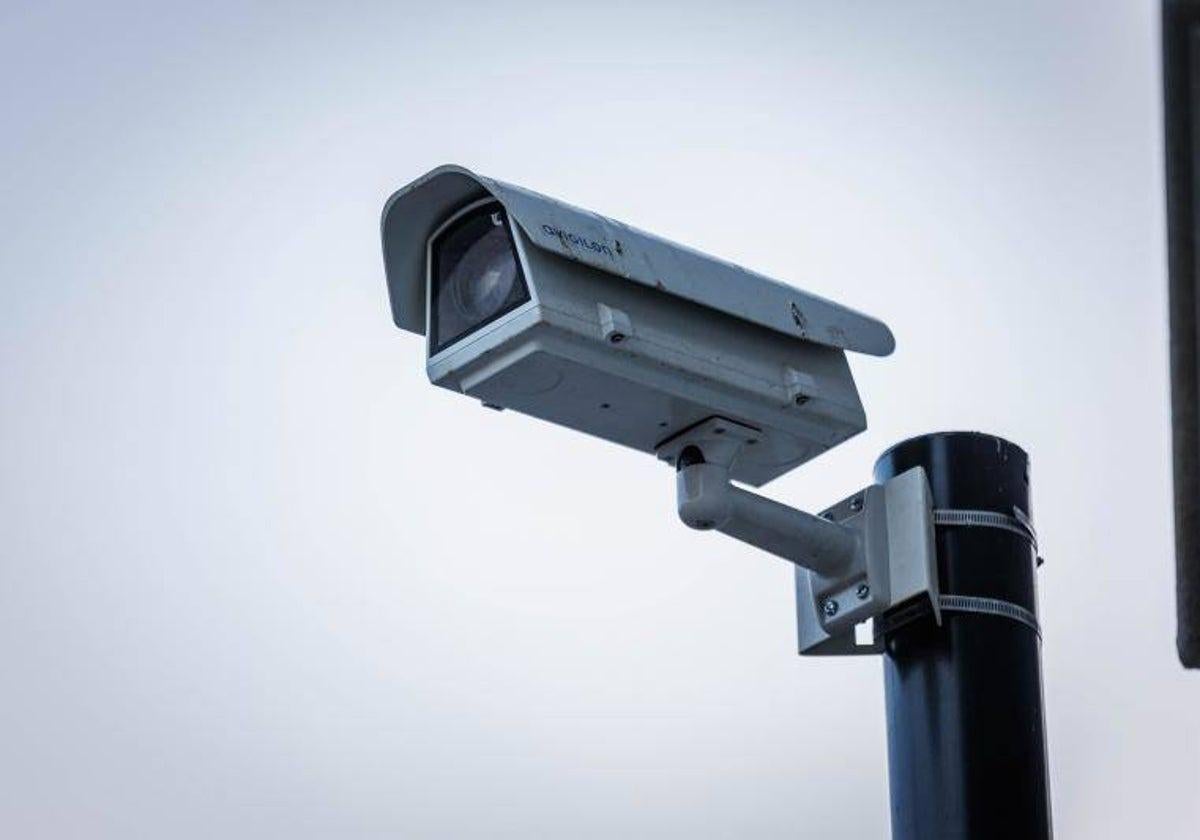Malaga's most vandalised monument and a 'ghost' fountain to be monitored by 'Big Brother' video surveillance
Another 21 statues and cultural sites in the capital of the Costa del Sol are set to get this additional protection from vandals
If the monument of Arturo Reyes, that looks out over the entrance to the Parque de Málaga, could speak, he would have enough to fill several volumes of police reports. The statue, accompanied by the 'Gitanilla' girl, which pays homage to the writer, has been under constant attack for decades, at least since the 1980s. The girl's hand has been subjected to repeated amputation of the right hand in which, when she is allowed, she holds a flower. The last time she received a new hand was last summer, although it took just a few weeks for it to disappear again.
Malaga city council has now taken a step to protect the most vandalised statue by granting it video surveillance coverage. The tender for the contract has already been awarded, but the project will not be limited to this statue. A total of 21 sculptures and cultural sites in the city will be given protection, despite a delay in the process.
Only three companies submitted bids for this tender, which was divided into two parts: the installation of fibre optic cabling to the monuments and the installation of surveillance cameras. However, there were certain problems that arose with the bidders and their proposals, which led to the request for several reports and corrections that have lengthened the process for more than a year.
Promoted by the security department, the contract has finally been awarded for a total of 94,758 euros (Spain's IVA sales included). The supply and installation of fibre optics will be carried out by Etralux for a budget of 51,259 euros, with a completion period of five months, while the installation of the 30 cameras in the 21 selected monuments will be carried out by Load Sistemas de Seguridad, for 43,499 euros, with six months for completion.
What heritage is protected?
In addition to the vandalised 'Gitanilla', some of Malaga's most important statues will receive protection: the bronze statue of Pablo Picasso in Plaza de la Merced; the Cenachero and the statue of the writer Hans Christian Andersen, both in Plaza de la Marina; Marqués de Larios at the entrance to his own street from the Alameda; the thousand faces of Tony Cragg, 'Puntos de Vista', at the junction of Larios and Strachan; the Greco-Roman dogs of 'Acteón' by José Seguiri, in the Plaza de Uncibay; and the 'Mano Quiromántica' by Rafael Pérez Estrada on Calle Bolsa.
From now on, all of them will have at least one camera pointed on them so that they can be monitored from the municipal control centre of the Local Police. The guardianship of cultural heritage will also be extended to other spaces outside the historic centre, such as the imposing bronze statue of the industrial revolution pioneer Manuel Agustín Heredia (on the homonymous road) and the zigzagging figure 'Man Moving 2' by Stephen Balkenhol (at the gates of the currently closed CAC Málaga ).
Fountains
In addition to sculptures, the list includes fountains of artistic interest: the mural-type fountains of Baño de Diana (Calle Granados con Beatas); Diosa Pomona (Plaza de San Francisco); the fountain in Plaza del Obispo; and Ninfa del Cántaro and Ninfa de la Caracola in the Parque de Málaga. Fibre optic 'eyes' will also be installed at the Roman Theatre; the main gate of the Alcazaba; and the entrance to Gibralfaro castle. Due to their size, these sites will be equipped with up to four cameras.
Outside the historic centre, the protection network will also reach the Tempus Fugit fountain (in front of the San Miguel cemetery) and the Once Ojos del Acueducto de San Telmo bridge on Calle Héctor de Villalobos, where graffiti also appeared after its rehabilitation a few years ago. The great paradox of this initiative is the inclusion on the list of the fountain-sculpture by Miguel Berrocal in the Glorieta Arquitecto César Olano (El Limonar), which was removed a decade ago for restoration and still has no return date, so the cameras will be monitoring a 'ghost' fountain.
Municipal Big Brother
These 21 spaces will be integrated into the municipal 'Gran Hermano' (Big Brother) plan. Video surveillance under this name began in May 2014. It currently has 68 cameras distributed mostly around the historic centre. This closed circuit security system also includes the Panteón de la Memoria Histórica del Parque de San Rafael and the Alcazaba tunnel.
In addition to these devices located in urban areas, the system is also active in areas of the Guadalhorce, Azucarera and Santa Bárbara business parks as part of the first phase of the project promoted in the industrial areas, while authorisation has been requested to add them to San Luis and La Estrella. The contract to extend video surveillance to the La Trinidad neighbourhood is also in the tendering process, while the implementation of another 14 devices for the area around the train and bus stations, covering the streets Héroe de Sostoa, Paseo de los Tilos, Mendívil, Eguiluz, Mauricio Moro and Avenida de las Américas, is also being processed.

